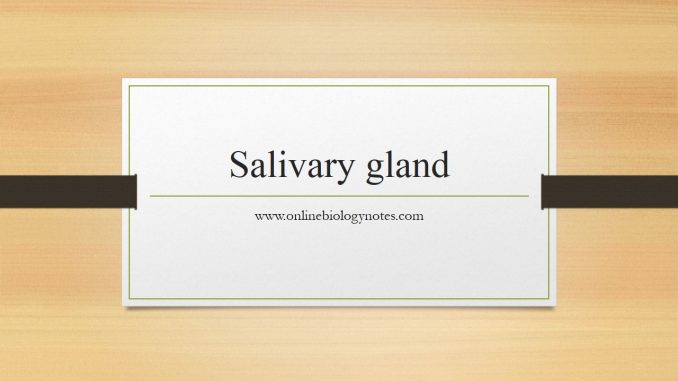
Salivary gland
- The human salivary gland is an exocrine gland.
- The salivary gland includes- the paired parotid, submandibular, and sublingual glands.
- The major function of the salivary glands is to secrete saliva, which plays a significant role in lubrication, digestion, immunity, and the overall maintenance of homeostasis within the human body.
1. Parotid gland
- Parotid gland is the largest salivary glands
- Ocured in pair
- weight:15–30 gm
- Location: It lies on each side of face in front of the ears, covering the masseter muscle at posterior.
- The boundaries of each parotid gland-
- Superior border –Zygoma
- Inferior border –Styloid Process, Styloid Process musculature, Internal Carotid Artery, Jugular Veins
- Posterior border –External Auditory Canal
- Anterior border –a diagonal line drawn from the Zygomatic root to the External auditory canal
- The long parotid ducts ( Sternsen’s duct) pass forward over masseter and open in the vestibule alongside the second upper molar tooth.
- constitute of about 20% of total salivary secretion
- The parotid gland secrete water, salts and salivary amylase, but unlike other salivary glands, they do not secret mucus, so the saliva produced by parotid gland is clear and watery.
2. Sub mandibular gland
- Size: half the size of parotid gland
- Location: located on the medial side of the mandible.
- Their ducts called submandibular ducts (warton’s duct), open on the floor of the mouth beside the lingular frenulum behind the lower incisors.
- Constitute of about 70% of total salivary secretion
- Secretes water, salts, salivary amylase and mucus
3. Sub lingual gland
- Size: smallest salivary gland
- Location: located in the floor of mouth beneath the tongue.
- They have numerous small ducts opening at the floor of the mouth.
- The sublingual duct are collectively known as duct of Rinivus.
- constitute of about 5% of total salivary secretion.
- Their secretion mostly contain water, salts and mucus.
Histology of salivary gland
- All the salivary glands are surrounded by a fibrous capsule.
- The gland are highly branched and consists of a number of lobules made up of small alveoli
- each alveoli is lined with secretory cells.
- Salivary glands are classified as exocrine glands that secrete saliva through ducts.
- The secretory structure is known as Salivary acinus.
Saliva
- Saliva is viscous, colourless, cloudy fluid which is the combined fluid of salivary gland and small mucus secreting glands of oral cavity.
- pH: 7.4-7.6 (slightly Alkaline)
- Amount: about 750-1500 ml of saliva is secreted in a day
- Composition: 98-99% water and 1-2 % (mineral salts, amylase, mucus, lysozyme, immunoglobulins, blood clotting factors etc)
Function of Saliva
- Moistens oral mucosa: Saliva moisturize the oral cavity and it is an important non immune defense mechanism in oral cavity.
- Swallowing: Saliva moistens dry food and cools hot food and make easy for swallowing and digestion
- Stimulation of taste bud: Saliva provides a medium for dissolved foods to stimulate the taste buds.
- Buffer: Saliva has a high concentration of bicarbonate ions and acts as physiological buffer
- Digestion: Saliva contains Ptylin (salivary amylase) that digest starch
- Antimicrobial activity: Saliva controls bacterial flora of the oral cavity. Lysozyme, Secretory IgA, and Salivary Peroxidase present in saliva have antimicrobial property.
- Mineralization: Saliva contains high concentration of calcium and phosphate, which helps in mineralization of teeth.
- Oral hygiene: saliva helps mouth and teeth clean
- Protection: Saliva protects the teeth from dental carries.
